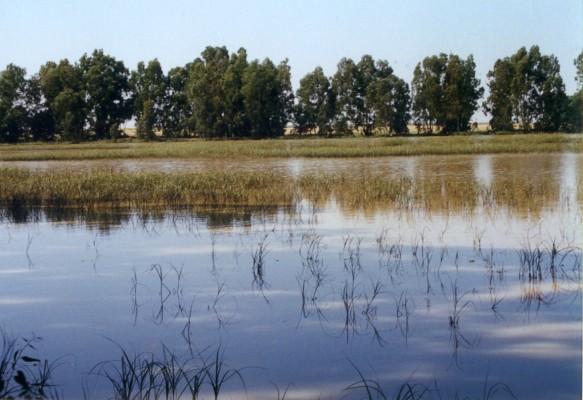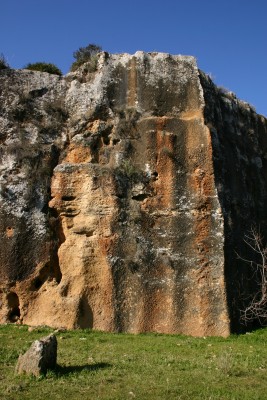The Mancomunidad de Municipios “Vega de Guadalquivir” [“Meadowlands of the Guadalquivir” Association of Municipalities] takes in the land surrounding the river from the Centre to the West of the Province of Córdoba.
The region takes in the following municipalities: Almodóvar del Río, La Carlota, Fuente Palmera, Guadalcázar, Hornachuelos, Palma del Río, Posadas and La Victoria.
The lands of this region are mainly given over to the cultivation of cotton, corn, wheat, barley, sunflowers, asparagus and citrus fruits. Farming, along with the services sector, represents another of the mainstays within the region’s economy. Climatic diversity and varied landscape make this region particularly attractive, as the area, occupying no more that 1683.59 km2 and representing 12.27% of the total area of the province, includes flat rural cropland, meadowland and mountains.
The Campiña, one of the most prosperous agricultural areas, takes in the municipalities of Carlota, Guadalcázar and La Victoria, where the landscape is made up of gentle slopes and irrigated crops.
La Vega [meadowlands], which provide exceptional conditions for agriculture, lie at either side of the river that gives its name to the region, and which winds its way past the municipalities of Almodóvar del Río, Posadas, Fuente Palmera, the southern side of Hornachuelos and Palma del Río.
La Sierra contains some of the most rugged and beautiful terrain in the province: the Sierra de Hornachuelos Nature Reserve. The Reserce stretches between the municipalities of Hornachuelos and Almodóvar del Río, taking in Posadas. The terrain possesses an incomparable beauty and is also a highly acclaimed hunting ground, catering for aficionados of big game and small game hunting.
Geographers apply the name of Guadalquivir Depression to the strip of land carved out by the course of the river, whereby the middle section of the river takes in a large portion of the region.
To the north, the region is bordered by the southern edge of the Sierra Morena, whilst the Campiña extends to the south, amidst terraces and alluvial plains.
The middle section of this water course traces a series of curves and meanders, particularly in the eastern section, and gradually descends as it passes between the first village (Villa del Río, at an altitude of 168 m) and the last village (Palma del Río, at an altitude of 54 m) along its route through Cordoba To the right, the Guadalquivir receives the tributaries Yeguas, Guadalmellato, Guadiato, Bembézar and Retortillo, whilst to the left it draws in the waters of the Guadajoz and the Genil. An excellent road and railway network has arisen alongside these water courses: The eastern area is connected via the N-IV, w! hich at the end converts into a motorway, whilst the N-431 runs through the west of the region.
Plant life is distinctly Mediterranean, with sclerophyllous species that retain green leaves throughout the year (ilexes and cork oaks).
The regions provides for a highly diverse series of activities such as hiking and hunting in the Hornachuelos Nature Reserve, motocross in Almodóvar del Río, model aeroplanes and remote control aircraft in Palma del Río, horse-riding routes through the villages of Fuente Palmera and boat trips between Córdoba and Palma del Río.
A gallery forest, with several well-conserved sections, shelters the river course and provides a natural refuge for numerous species of small birds: Poplars, willows, elms and alders, interspersed with brambles, tamarinds, oleanders, giant reeds and other bushes, provide shelter to nightingales, reed-warblers, finches, bee-eaters, martins and many other species of small birds. Moreover, certain areas of the river also afford habitats for aquatic species, such as ducks, gulls, coots, herons and storks.
The fertile Vega [meadowlands] surrounding the river course are largely given over to agriculture, which is enhanced by irrigation that transforms the landscape and increases the yield of corn, beetroot, cotton, vegetables and fruits, recently bolstered by the cultivation of asparagus and tobacco in the west. These cultivations, along with the traditional unirrigated cultivation of cereals and olives, favour the development of processing industries, such as olive-oil mills, sugar refineries, cotton plants, canning plants and pasta production, which exist along side farming industries, such as dairies and pork butcheries, and industries producing furniture. Pastures and fodder production sustain the dairies and a few fighting bull ranches.




